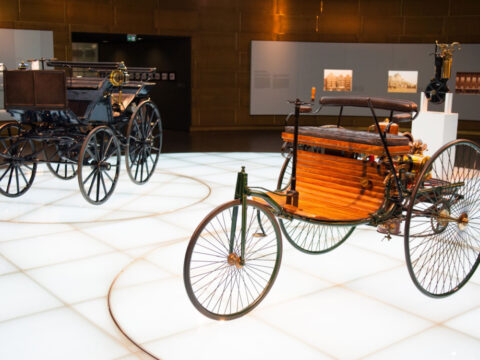The Boeing B-52 Stratofortress is one of the most iconic military aircraft in history, known for its incredible longevity and versatility. Despite being in service for decades, this strategic bomber continues to reveal surprising insights about its design, capabilities, and impact on modern warfare. In this article, we’ll uncover some of the lesser-known facts and intriguing details about the B-52, shedding light on why this aircraft remains a critical asset in the U.S. Air Force. From its unmatched endurance to its role in shaping military strategy, the B-52 continues to impress and surprise even today.
Contents
Longest Operational Military Aircraft
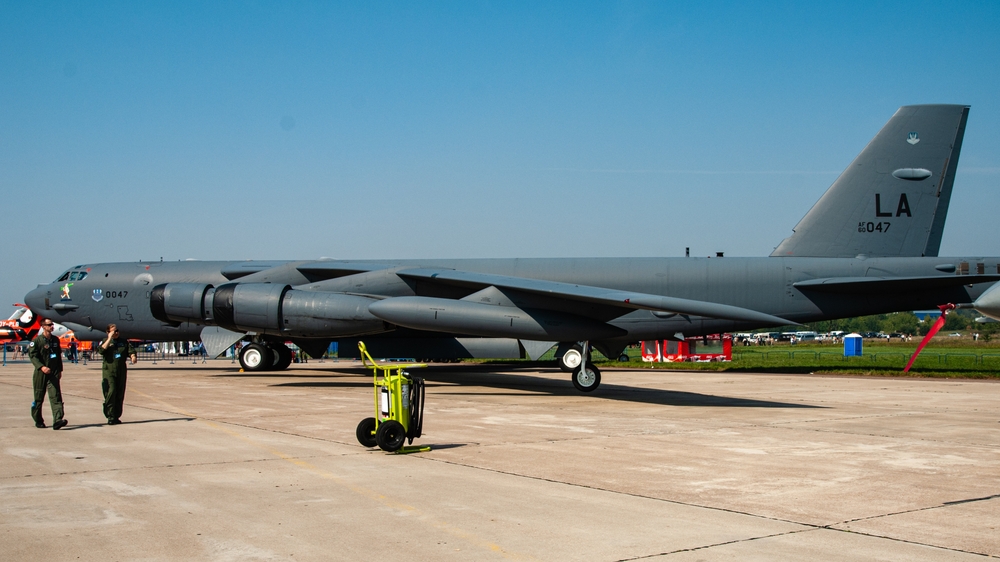
The Boeing B-52 Stratofortress holds the remarkable distinction of being the longest-serving military aircraft in the world. First introduced in 1955, the B-52 has been in continuous service for over six decades. Despite its age, the B-52 remains a vital component of the U.S. Air Force’s strategic bomber fleet, with plans to keep it operational until at least 2050. This means that the B-52 will likely serve for nearly a century, a testament to its robust design, adaptability, and the continuous upgrades it has received over the years. Its longevity is unmatched, making it an iconic symbol of American airpower.
Designed for Nuclear Warfare
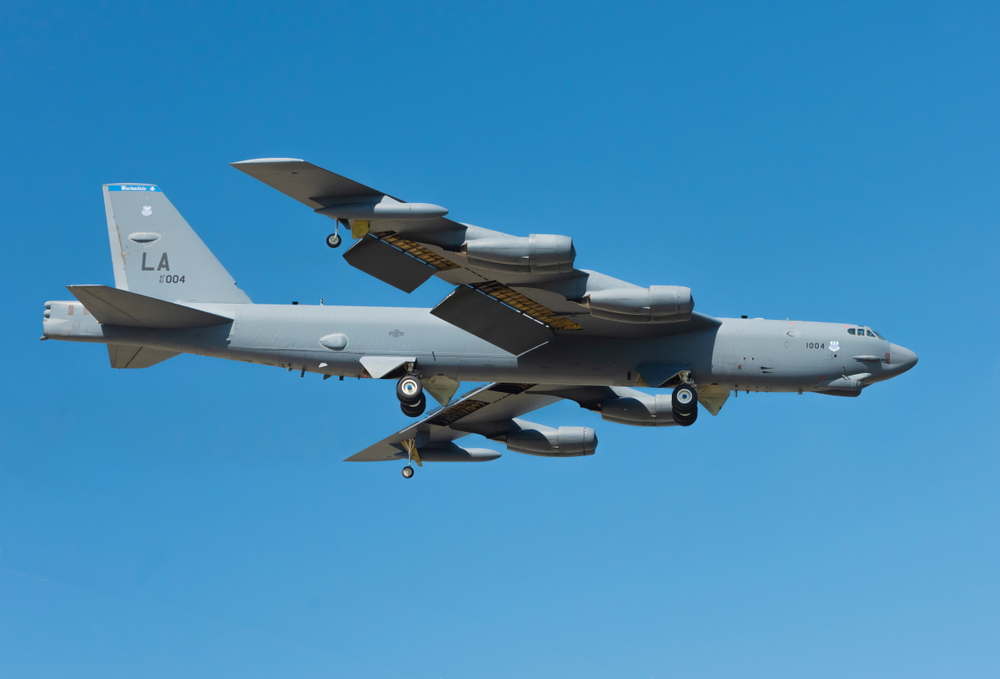
The B-52 was originally designed during the Cold War as a strategic bomber capable of delivering nuclear weapons deep into Soviet territory. Its long range, high payload capacity, and ability to carry nuclear bombs and cruise missiles made it a cornerstone of the U.S. nuclear deterrent strategy. While its role has evolved over time to include conventional bombing, the B-52’s original design as a nuclear bomber reflects the tense geopolitical climate of the 1950s and the strategic thinking of that era.
Massive Payload Capacity
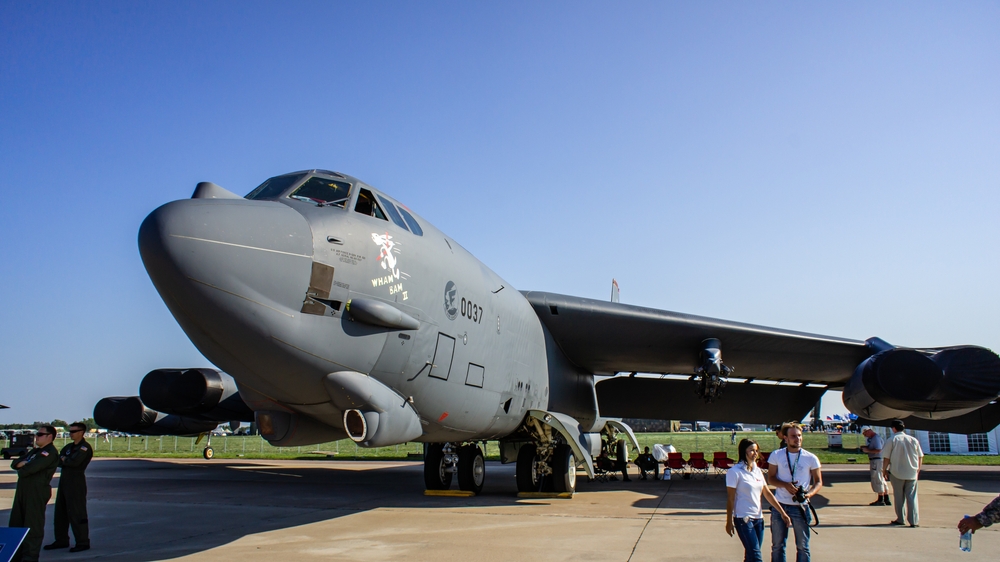
One of the most impressive features of the B-52 Stratofortress is its massive payload capacity. The aircraft can carry up to 70,000 pounds of bombs, missiles, and other ordnance, making it one of the most heavily armed aircraft in the world. This payload capacity allows the B-52 to deliver a wide variety of munitions, from conventional bombs to precision-guided missiles, making it incredibly versatile in combat situations. Its ability to carry such a large payload over long distances is a key reason why the B-52 remains relevant in modern military operations.
Capable of Aerial Refueling
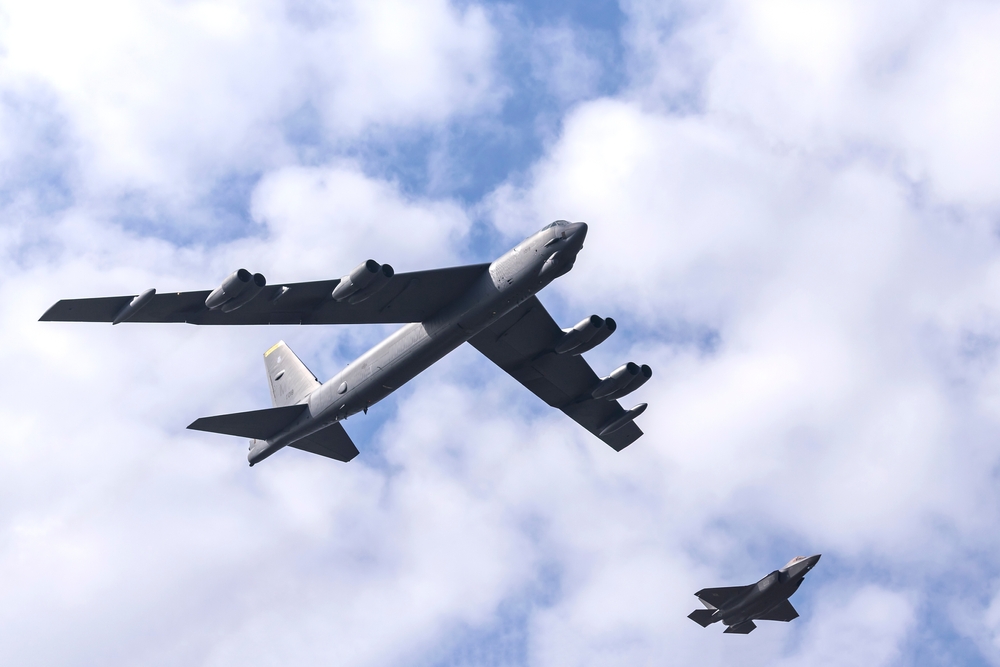
The B-52’s ability to perform aerial refueling is a critical feature that extends its range and operational flexibility. With the capability to refuel mid-air, the B-52 can remain airborne for extended periods, covering vast distances without needing to land. This makes it an ideal platform for long-range missions, including global strike capabilities. Aerial refueling has allowed the B-52 to participate in missions halfway around the world, demonstrating its strategic reach and importance in the U.S. military’s global operations.
Nicknamed “BUFF”
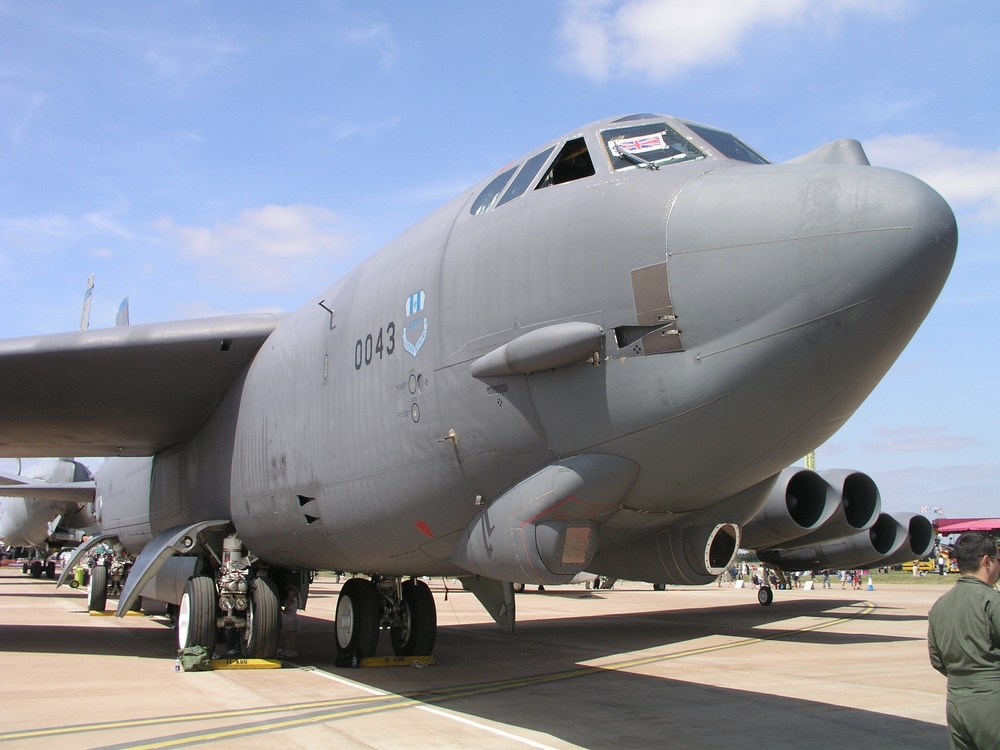
The B-52 is affectionately nicknamed “BUFF,” which stands for “Big Ugly Fat Fella” (or a more colorful variation). This nickname reflects the aircraft’s ungainly appearance, with its large wingspan, long fuselage, and distinctive eight-engine layout. Despite its somewhat awkward looks, the B-52 has earned the respect and admiration of those who have flown and maintained it, thanks to its reliability, versatility, and sheer power. The nickname has become a term of endearment, highlighting the affection many in the military have for this legendary aircraft.
Versatile Weapons Platform
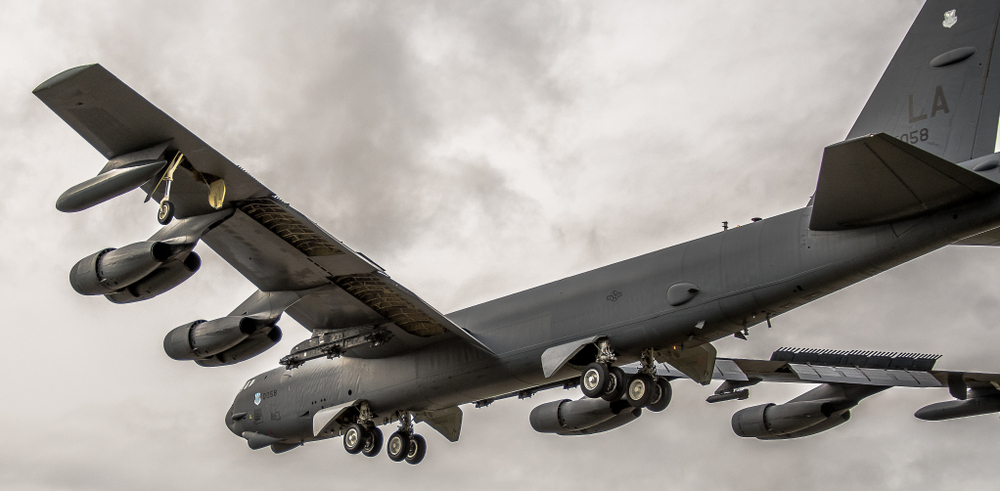
The B-52 has proven to be an incredibly versatile weapons platform over its long service life. Originally designed to drop unguided bombs, the B-52 has been continuously upgraded to carry modern precision-guided munitions, cruise missiles, and even air-launched decoys. Its adaptability has allowed it to perform a wide range of missions, from carpet bombing during the Vietnam War to launching precision strikes against terrorist targets in the Middle East. The B-52’s ability to evolve with changing military needs is a key reason for its continued service.
Survived Numerous Upgrades
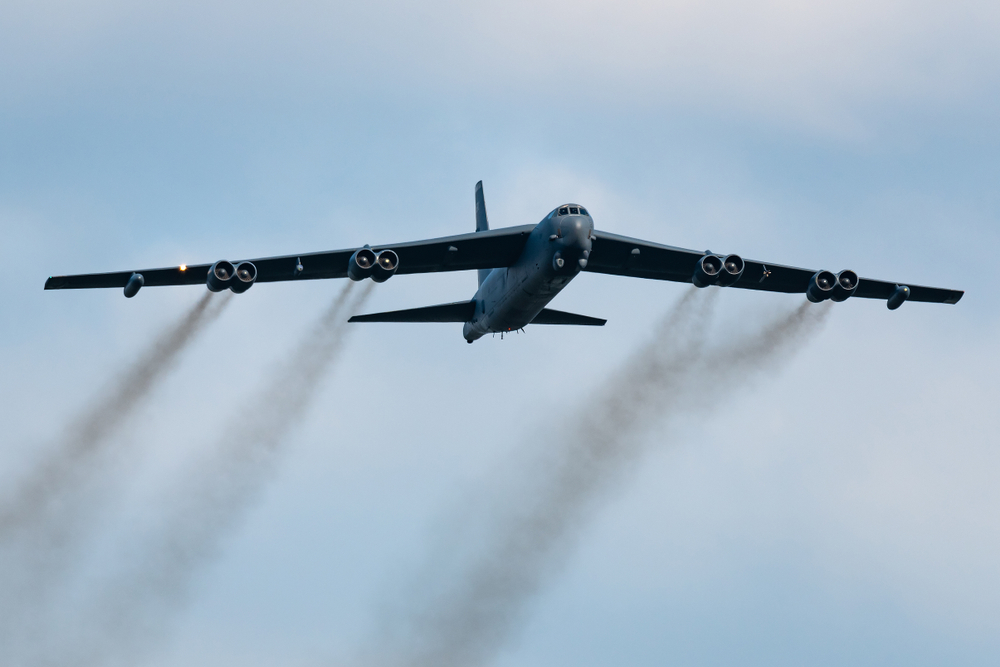
Over its decades of service, the B-52 has undergone numerous upgrades to keep it relevant in modern warfare. These upgrades have included new avionics, advanced radar systems, improved communications, and enhanced electronic warfare capabilities. The engines have also been overhauled to improve fuel efficiency and extend the aircraft’s range. The B-52’s airframe has proven so durable that it has outlasted multiple generations of technology, making it a prime candidate for continuous modernization. This ability to absorb and integrate new technology has been essential to its longevity.
High Altitude Capability
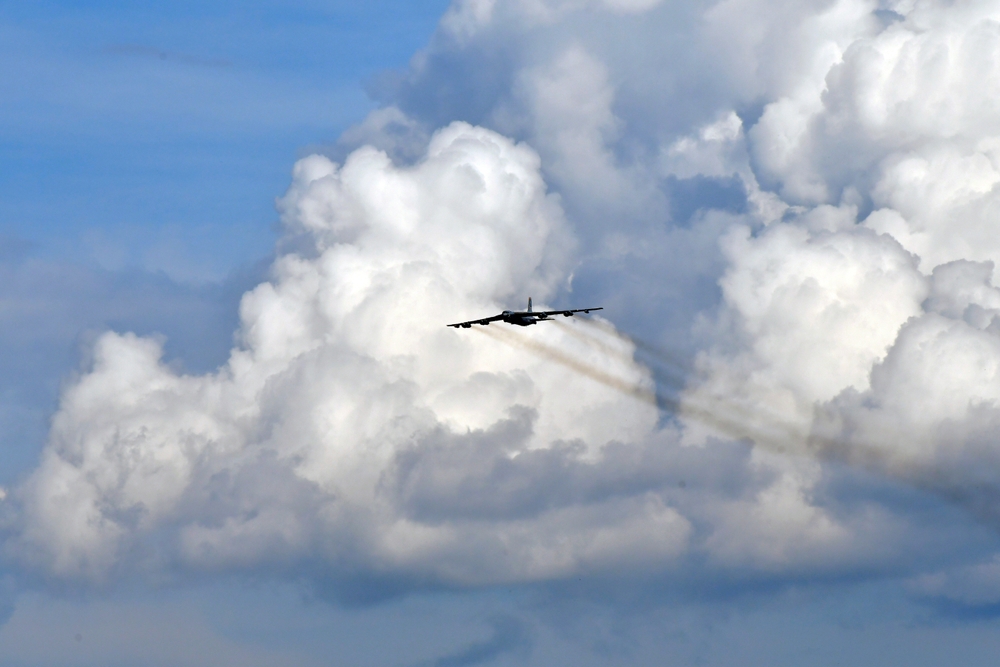
The B-52 Stratofortress is capable of flying at altitudes up to 50,000 feet, allowing it to operate above most enemy air defenses. This high-altitude capability was particularly valuable during the Cold War, when the B-52 was tasked with penetrating Soviet airspace. Flying at such heights makes the B-52 less vulnerable to anti-aircraft fire and surface-to-air missiles, providing a significant tactical advantage. Even in modern conflicts, the B-52’s ability to operate at high altitudes contributes to its effectiveness as a strategic bomber.
Involvement in Every Major Conflict Since Vietnam
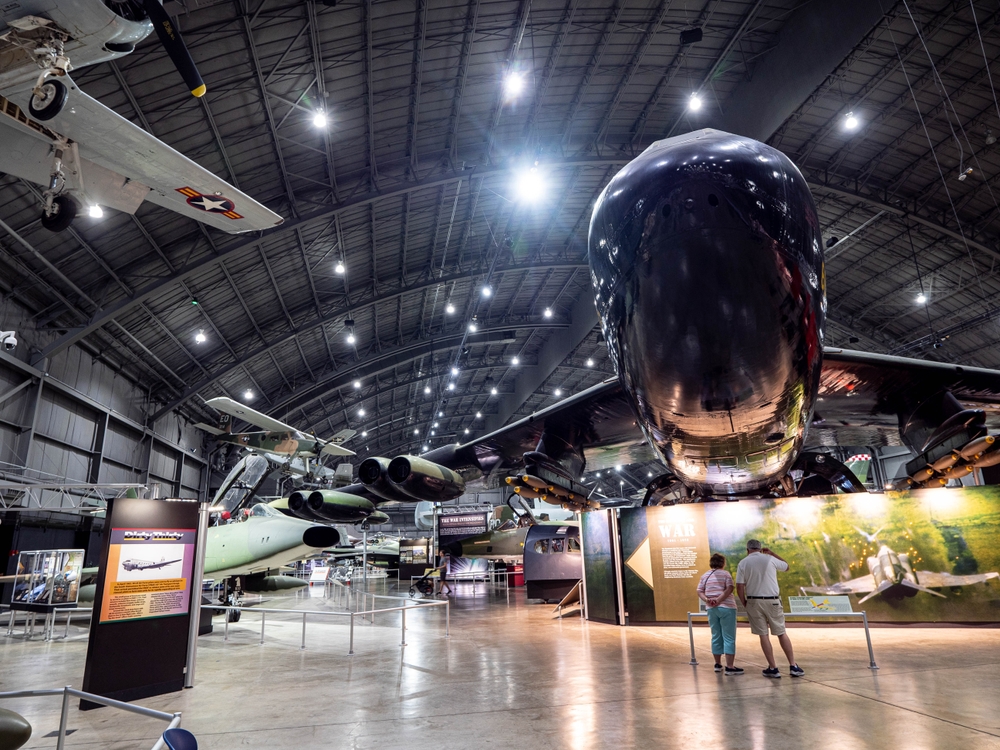
The B-52 has seen action in every major U.S. conflict since the Vietnam War, demonstrating its enduring relevance and versatility. From Operation Rolling Thunder in Vietnam to the Gulf War, the Kosovo conflict, and the wars in Iraq and Afghanistan, the B-52 has been a reliable and powerful tool in the U.S. military’s arsenal. Its ability to deliver a wide range of munitions and conduct long-range strikes has made it indispensable in various combat scenarios. The B-52’s continued use in modern conflicts underscores its adaptability and effectiveness as a combat aircraft.
Can Drop a Wide Range of Munitions
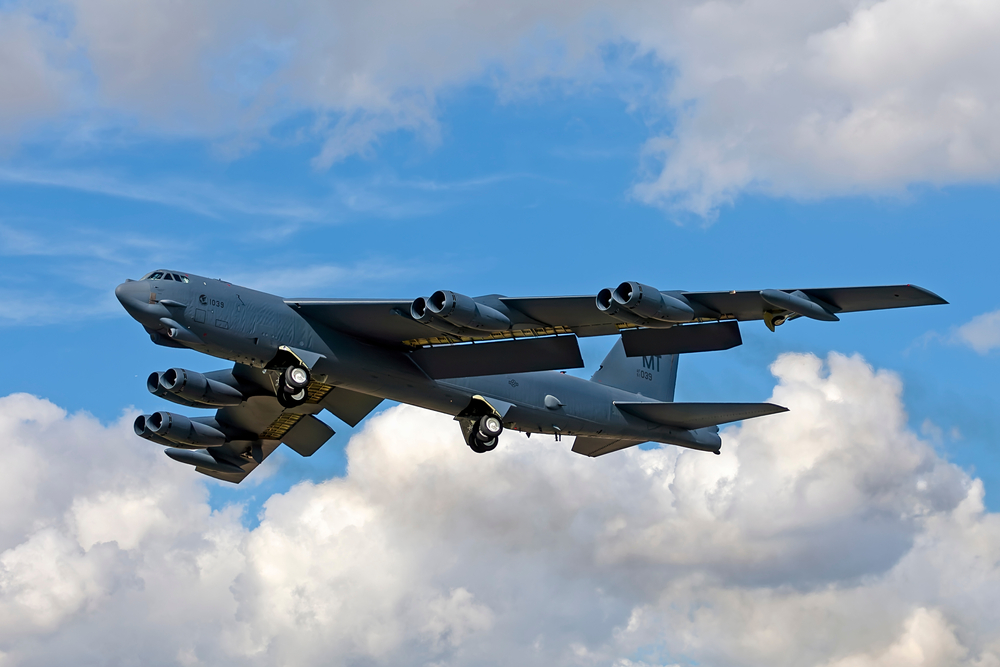
The B-52’s ability to drop a wide range of munitions is one of its most significant strengths. It can carry everything from unguided bombs and cluster munitions to precision-guided bombs, cruise missiles, and nuclear weapons. This versatility allows the B-52 to be used in a variety of roles, from strategic bombing to close air support and even psychological operations (using leaflet drops). The B-52’s extensive munitions loadout makes it one of the most flexible and capable bombers in the world, able to adapt to different mission requirements with ease.
Participated in the Longest Bombing Mission in History
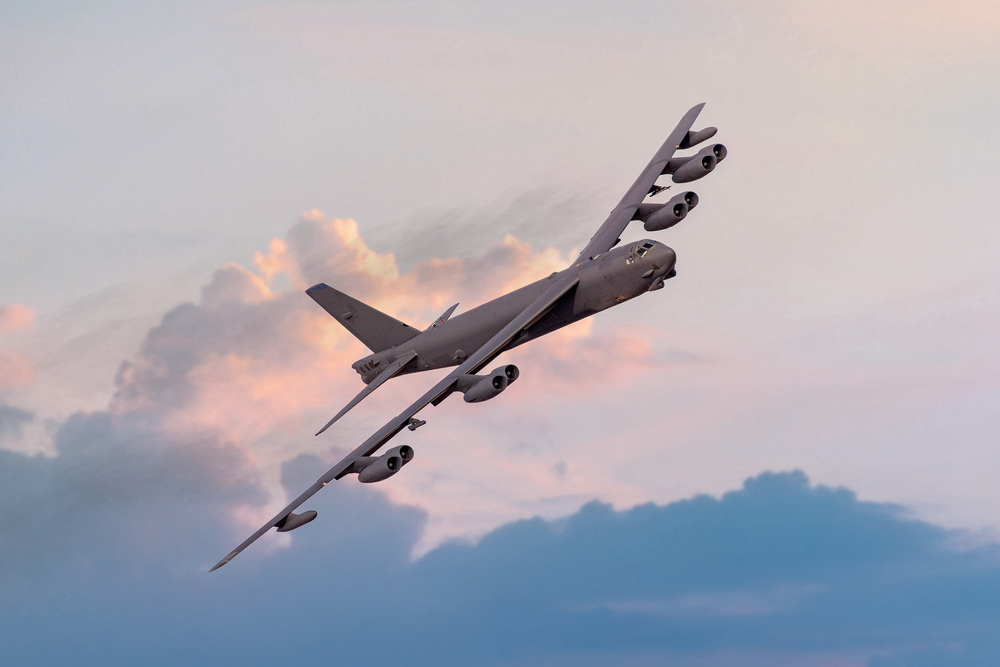
The B-52 holds the record for the longest bombing mission in history, known as Operation Secret Squirrel. In January 1991, during the Gulf War, B-52s flew a 35-hour, 14,000-mile round trip from Barksdale Air Force Base in Louisiana to Iraq and back. The mission involved launching 35 AGM-86C air-launched cruise missiles at strategic targets in Iraq, marking the first time these missiles were used in combat. This mission showcased the B-52’s incredible range and strategic reach, as well as its ability to deliver precision strikes from halfway around the world.
Air-Launched Cruise Missile (ALCM) Carrier
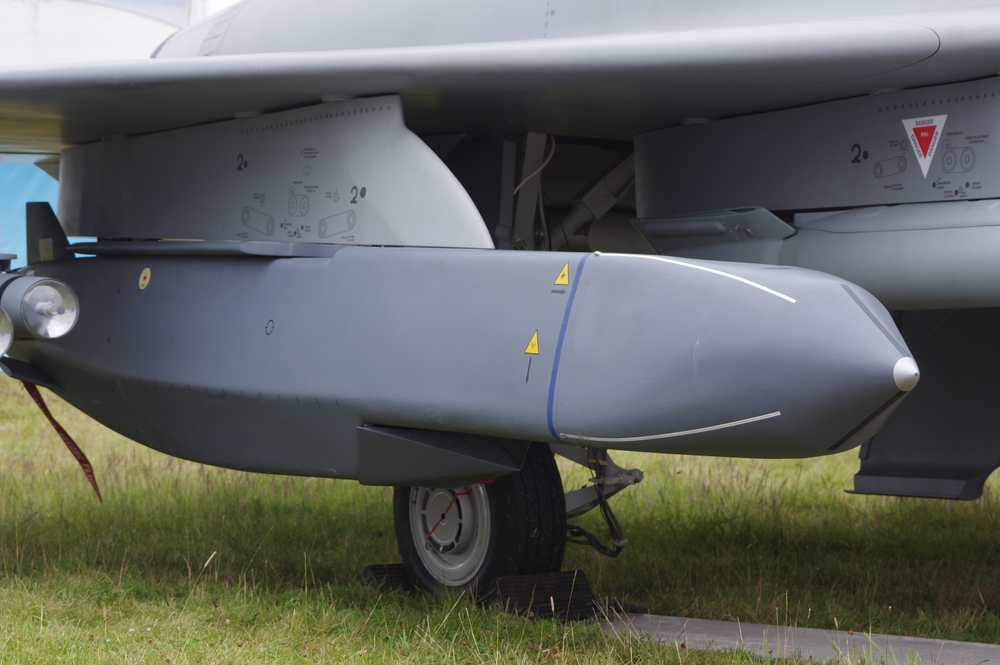
The B-52 has been a key platform for launching Air-Launched Cruise Missiles (ALCMs), which are long-range, precision-guided weapons designed to strike high-value targets from a safe distance. The B-52 can carry up to 20 ALCMs, allowing it to deliver a massive amount of firepower over long distances. The use of ALCMs has enhanced the B-52’s ability to engage targets with precision, even in heavily defended airspace. This capability has made the B-52 a crucial element of the U.S. strategic deterrent, capable of delivering devastating strikes while minimizing risk to the aircraft and crew.
Known for Its Distinctive Smoke Trails
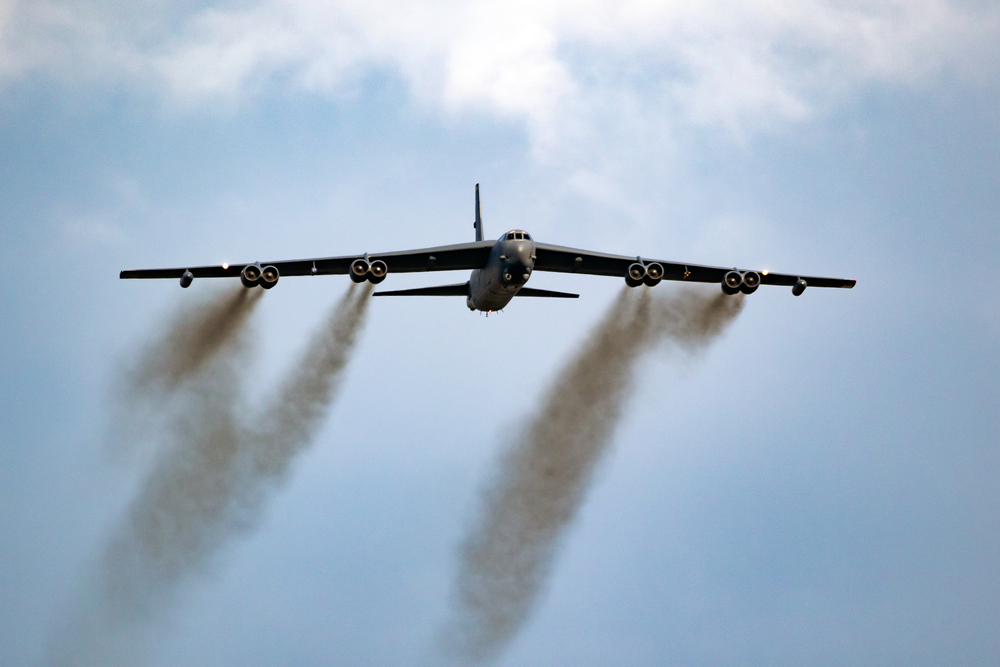
One of the most recognizable features of the B-52 is the distinctive black smoke trails left behind by its eight Pratt & Whitney J57 turbojet engines. These engines, which were cutting-edge technology when the B-52 was first introduced, are known for producing large amounts of smoke, particularly during takeoff and high-power settings. While the smoke trails are a signature feature of the B-52, they also make the aircraft more visible to enemy radar and infrared sensors. Efforts to reduce the B-52’s radar and infrared signature have been part of ongoing modernization efforts, but the smoky engines remain a well-known characteristic of the aircraft.
Capable of Operating from Short, Rough Airstrips
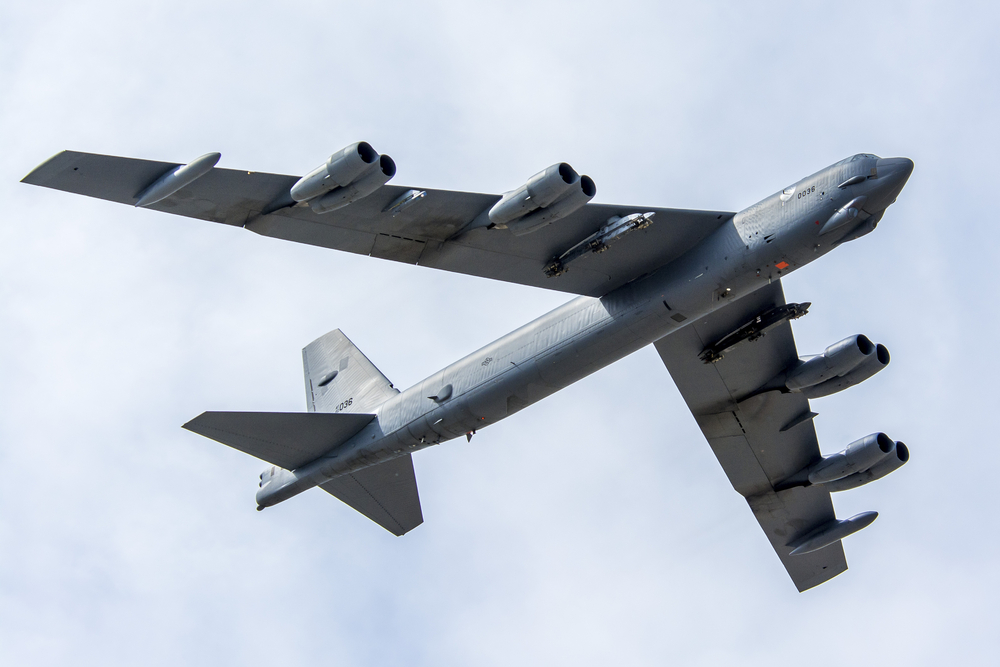
Despite its large size, the B-52 was designed to be capable of operating from relatively short, rough airstrips in the event of an emergency. This capability was a key consideration during the Cold War when the possibility of a nuclear exchange required the U.S. military to be able to disperse its strategic bombers to remote locations. The B-52’s landing gear was designed with this in mind, featuring 12 main wheels arranged in a manner that spreads the aircraft’s weight over a larger area, allowing it to operate from less-than-ideal airstrips. This design feature enhances the B-52’s survivability and operational flexibility.
Multi-Generational Crews
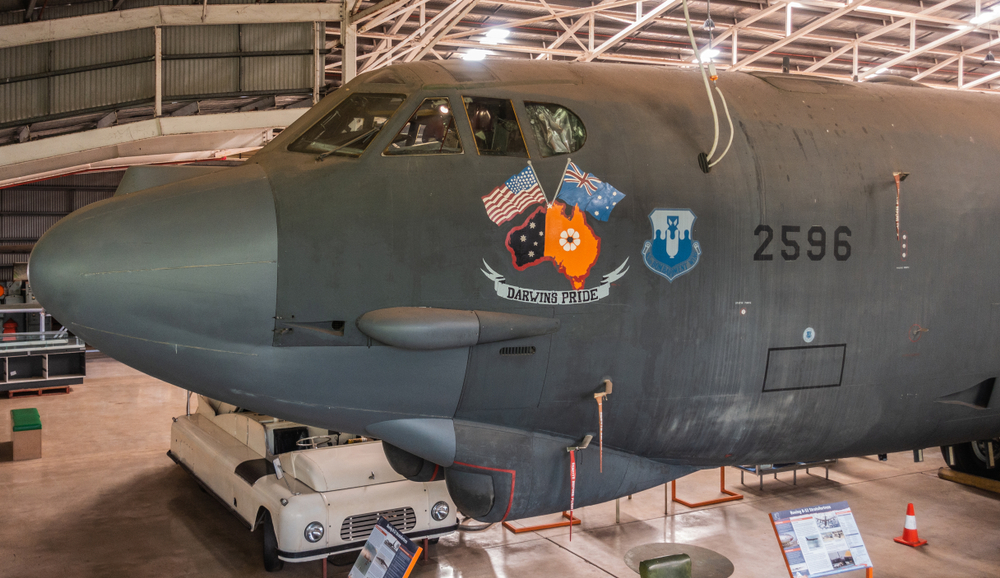
Due to the B-52’s long service life, it is not uncommon for multiple generations of the same family to have served as crew members on the aircraft. Fathers, sons, and even grandsons have flown or maintained B-52s, a testament to the aircraft’s longevity and enduring role in the U.S. Air Force. This multi-generational connection to the B-52 fosters a deep sense of pride and tradition among those who have served with the aircraft, further solidifying its status as an icon of American military aviation.
Versatile Mission Capabilities
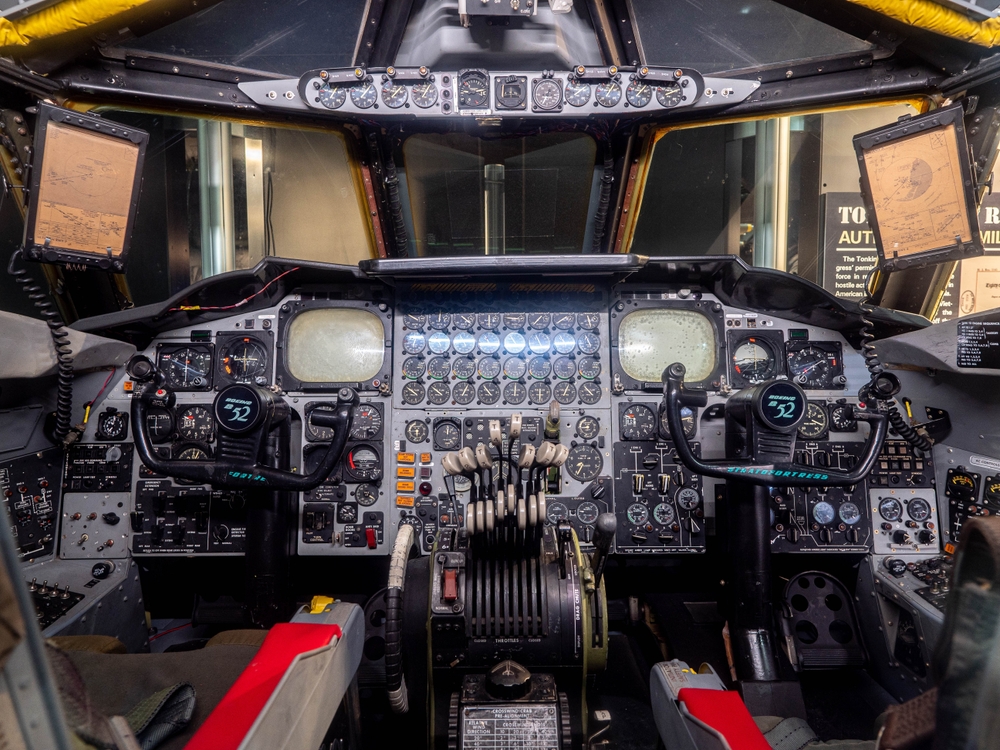
The B-52’s mission capabilities extend far beyond strategic bombing. Over the years, the B-52 has been adapted to perform a wide range of roles, including close air support, electronic warfare, reconnaissance, and maritime patrol. Its ability to carry a diverse array of weapons and sensors allows it to be used in a variety of mission profiles, from suppressing enemy air defenses to delivering humanitarian aid. This versatility has made the B-52 an invaluable asset to the U.S. military, capable of adapting to the evolving needs of modern warfare.
First Bomber Equipped with GPS
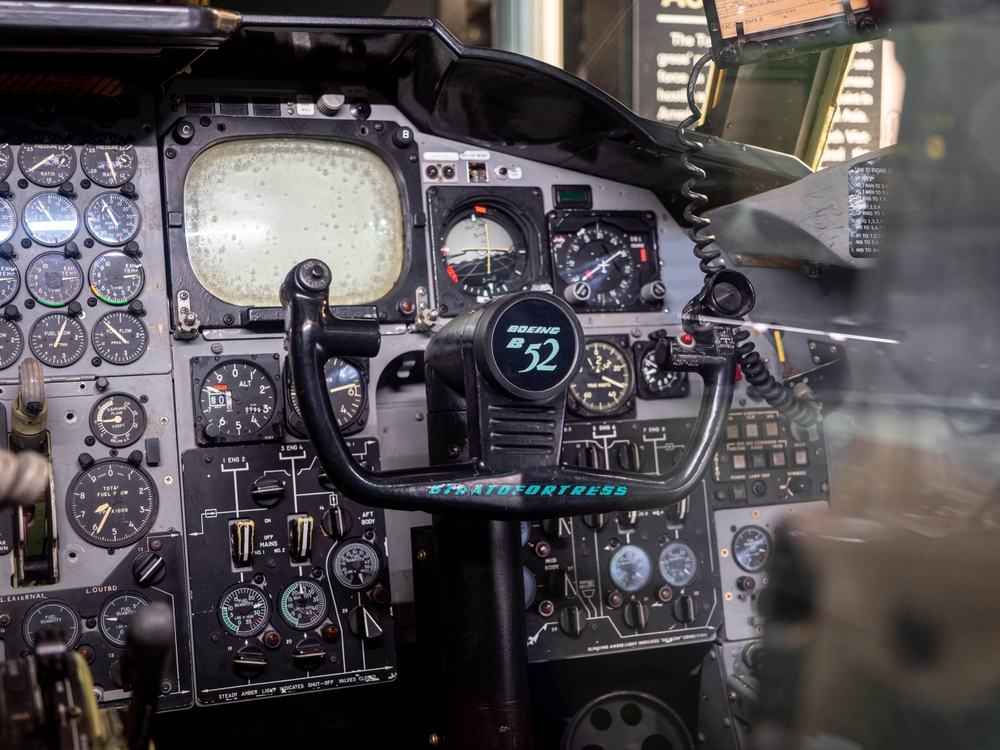
The B-52 was the first strategic bomber to be equipped with the Global Positioning System (GPS), a technology that revolutionized navigation and targeting accuracy. The integration of GPS into the B-52’s navigation and weapons systems allowed for pinpoint accuracy in delivering munitions, even in adverse weather conditions or during nighttime operations. This upgrade significantly enhanced the B-52’s effectiveness as a precision strike platform and demonstrated the aircraft’s ability to incorporate cutting-edge technology to remain relevant in modern warfare.
Continual Upgrades to Keep Up with Modern Warfare
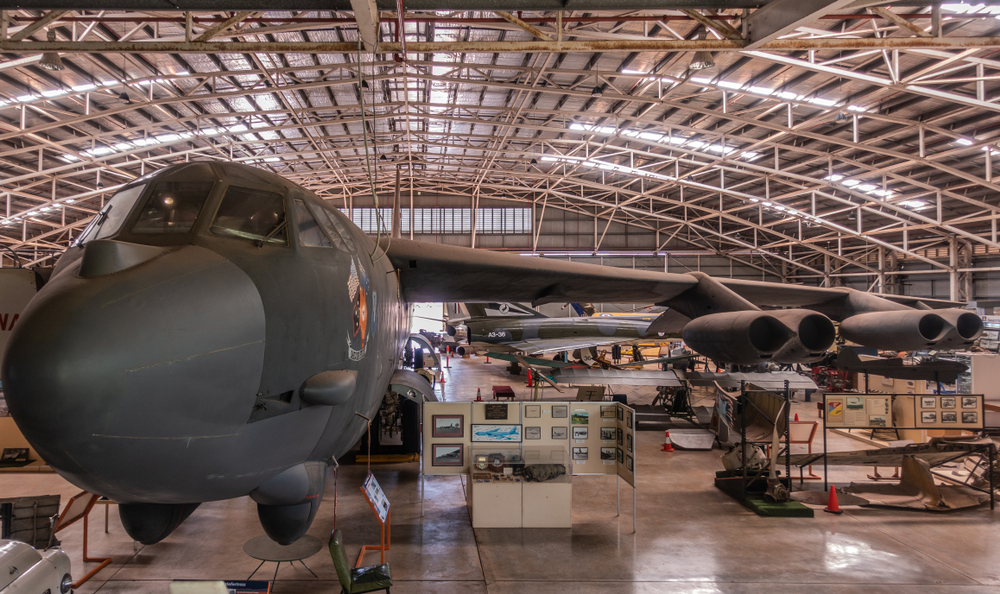
The B-52’s ability to remain relevant for over six decades is due in large part to its continual upgrades. The aircraft has undergone numerous modifications to keep pace with advancements in technology and the changing nature of warfare. These upgrades have included new radar systems, advanced communications, electronic warfare suites, and improved avionics. The B-52 has also been adapted to carry modern weapons, such as the Joint Direct Attack Munition (JDAM) and the AGM-86B cruise missile. This continuous modernization has ensured that the B-52 remains a formidable and adaptable platform in the U.S. military’s arsenal.
The Backbone of the U.S. Strategic Bomber Fleet
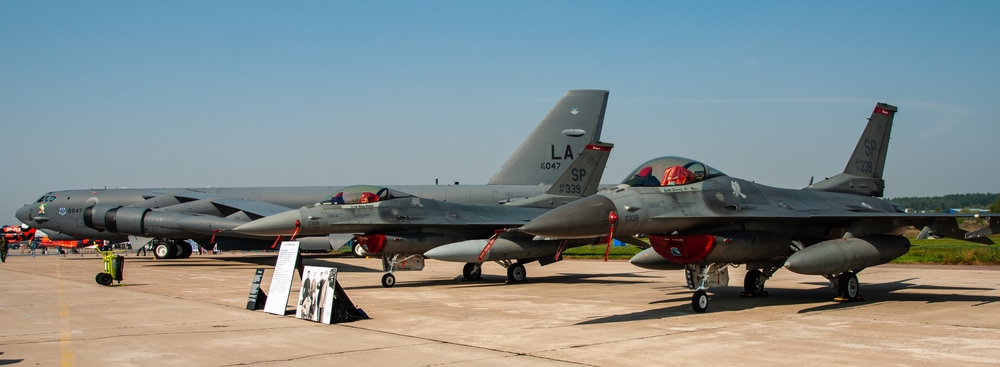
Despite being the oldest bomber in the U.S. Air Force’s inventory, the B-52 remains the backbone of the U.S. strategic bomber fleet. With a combination of range, payload capacity, and versatility, the B-52 continues to play a critical role in the U.S. nuclear triad, which includes land-based missiles, submarine-launched missiles, and strategic bombers. The B-52’s ability to deliver both nuclear and conventional munitions, along with its global reach, makes it an indispensable tool for deterrence and power projection. Its continued service highlights the enduring value of this iconic aircraft in maintaining U.S. strategic capabilities.
A Key Role in Strategic Deterrence
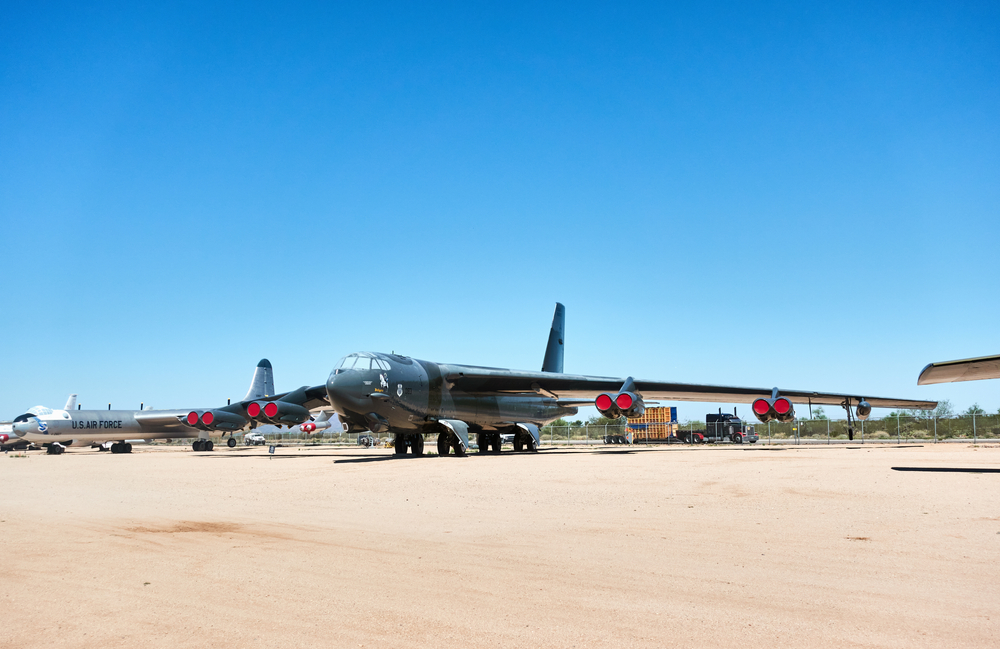
The B-52 Stratofortress has played a crucial role in the U.S. strategic deterrence strategy for over half a century. As a long-range strategic bomber, the B-52 has the capability to deliver nuclear weapons anywhere in the world, making it a key element of the U.S. nuclear deterrent. The presence of B-52s in the U.S. military’s arsenal serves as a powerful signal to potential adversaries, reinforcing the concept of mutually assured destruction (MAD). The B-52’s role in strategic deterrence has helped prevent the outbreak of major conflicts, particularly during the tense years of the Cold War.
This article originally appeared on MyCarMakesNoise.
More from MyCarMakesNoise
15 Modest Trucks That Pack Serious Towing Strength

When it comes to towing, not all trucks need to be hulking giants to get the job done. Many modest-sized trucks offer impressive towing capacities, combining power, efficiency, and practicality. Read More
The Untold Histories of 15 Iconic Trains Around the World

Trains have long captured our imaginations with their journeys across picturesque landscapes and bustling cities. But beyond their familiar routes and iconic names, some trains carry fascinating, hidden stories. From espionage missions to secret royal travels, these lesser-known tales add a layer of intrigue to the world’s most famous trains. Read More
15 Rare Porsche Classics You’ll Have a Hard Time Finding

Porsche has a rich history of producing iconic sports cars, many of which have become highly sought-after classics. This list explores 15 of the rarest Porsche models ever made, each with its unique story and undeniable appeal. Read More


